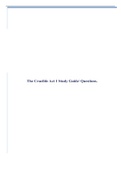Resume
Summary Microbial Physiology, MIB20306, wur
- Cours
- Établissement
- Book
A summary of Brock Biology of Microorganisms with the relevant chapters for Microbial Physiology, a course given in year 2 of the WUR bachelor Biotechnology.
[Montrer plus]













